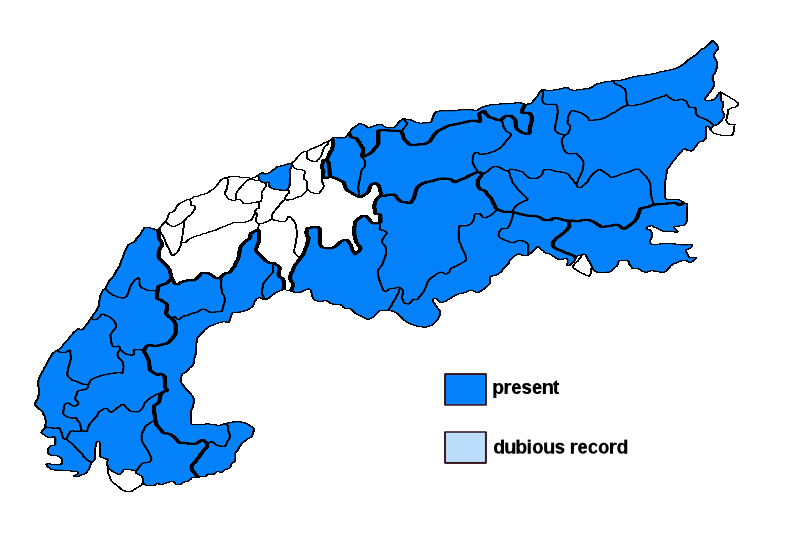Caloplaca stillicidiorum (Vahl) Lynge s.lat.
Syn.: Callopisma cerinum (Hedw.) De Not. var. muscorum A. Massal., Caloplaca cerina (Hedw.) Th. Fr. f. chloroleuca Sm., Caloplaca cerina (Hedw.) Th. Fr. var. chloroleuca (Sm.) Th. Fr., Caloplaca cerina (Hedw.) Th. Fr. var. muscorum (A. Massal.) Jatta, Caloplaca cerina (Hedw.) Th. Fr. var. stillicidiorum (Vahl) Th. Fr., Caloplaca muscorum (A. Massal.) M. Choisy & Werner, Lichen stillicidiorum Vahl, Placodium cerinum (Hedw.) Nägeli ex Hepp var. stillicidiorum (Vahl) Hepp
Lichenised.
Substrate: living mosses, plant debris, bark, calciferous soil
Altitudinal range: from the montane belt (potential vegetation: deciduous forests dominated by Fagus sylvatica and closed coniferous forests with Picea abies) to the alpine belt (potential vegetation: treeless Alpine grasslands and tundras, to the lower limit of perennial snow and the equilibrium line of glaciers)
Note: a mainly arctic-alpine, circumpolar lichen found on mosses and plant debris in tundra-like habitats, especially in areas with calcareous or basic siliceous rocks. This is the only taxon of the C. cerina-group hosting the parasite Stigmidium cerinae, which suggests that it could be an independent species. The Caloplaca cerina-like lichens growing on the ground on various substrata such as bryophytes, plant debris, bark of exposed roots and chamaephytes form four monophyletic groups and six ecotypes, which cannot be always distinguished on the basis of morphological characters.
Austria: Vorarlberg; Tirol; Salzburg; Kärnten; Steiermark; Oberösterreich; Niederösterreich (incl. Wien); Germany: Oberbayern; Schwaben; Switzerland: Schwyz; France: Alpes-de-Haute-Provence; Haute-Alpes; Alpes-Maritimes; Drôme; Isère; Savoie; Haute-Savoie; Vaucluse; Italy: Friuli; Veneto; Trentino Alto Adige; Lombardia; Piemonte; Valle d'Aosta; Liguria; Slovenia: Alpine and Pre-Alpine Slovenia; Liechtenstein





